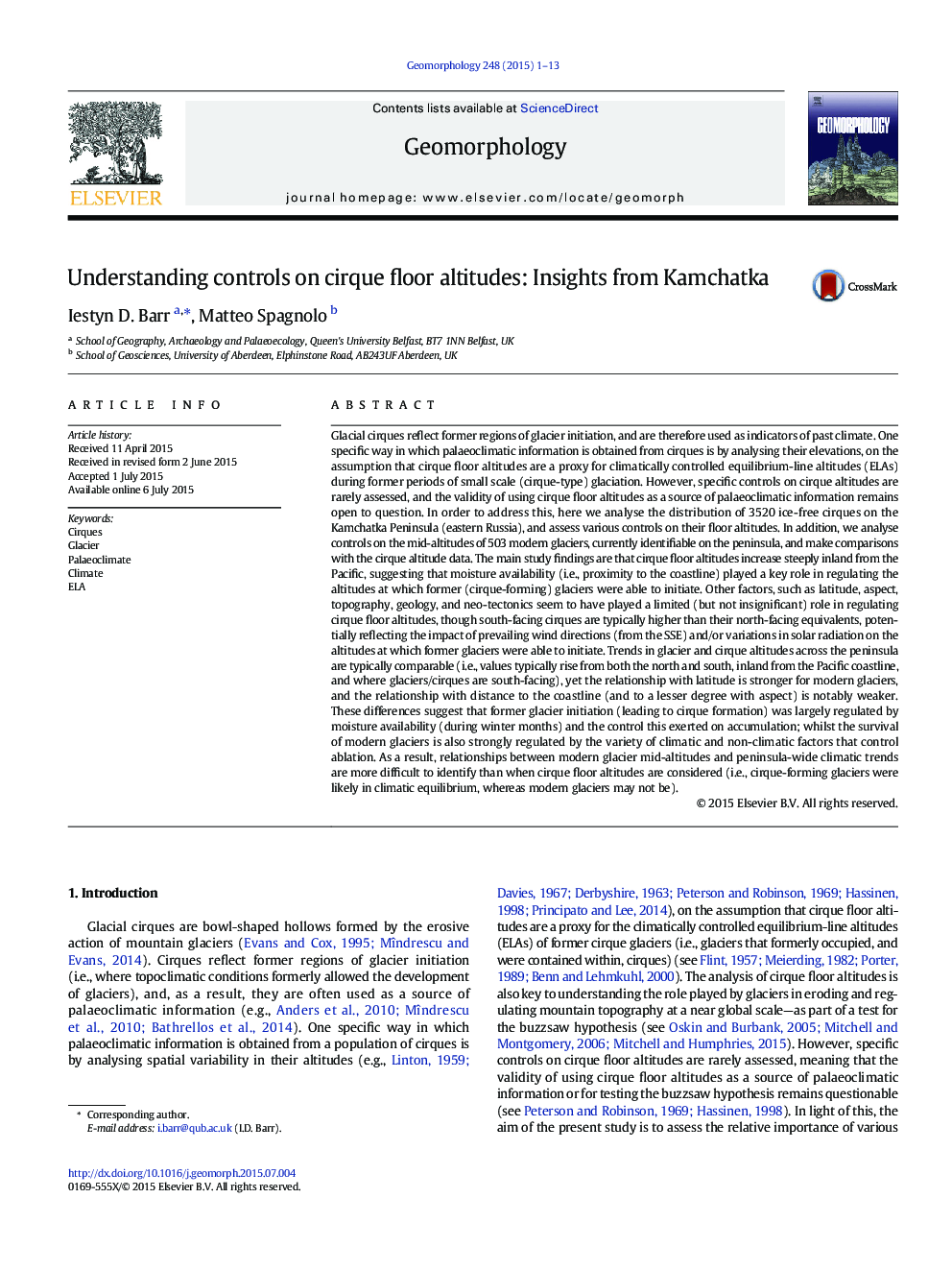| کد مقاله | کد نشریه | سال انتشار | مقاله انگلیسی | نسخه تمام متن |
|---|---|---|---|---|
| 6432025 | 1635401 | 2015 | 13 صفحه PDF | دانلود رایگان |

- We analyse controls on the altitudes of cirques and glaciers across Kamchatka.
- Palaeoprecipitation acts as the dominant control on cirque floor altitudes.
- Controls on glacier altitudes are more varied.
Glacial cirques reflect former regions of glacier initiation, and are therefore used as indicators of past climate. One specific way in which palaeoclimatic information is obtained from cirques is by analysing their elevations, on the assumption that cirque floor altitudes are a proxy for climatically controlled equilibrium-line altitudes (ELAs) during former periods of small scale (cirque-type) glaciation. However, specific controls on cirque altitudes are rarely assessed, and the validity of using cirque floor altitudes as a source of palaeoclimatic information remains open to question. In order to address this, here we analyse the distribution of 3520 ice-free cirques on the Kamchatka Peninsula (eastern Russia), and assess various controls on their floor altitudes. In addition, we analyse controls on the mid-altitudes of 503 modern glaciers, currently identifiable on the peninsula, and make comparisons with the cirque altitude data. The main study findings are that cirque floor altitudes increase steeply inland from the Pacific, suggesting that moisture availability (i.e., proximity to the coastline) played a key role in regulating the altitudes at which former (cirque-forming) glaciers were able to initiate. Other factors, such as latitude, aspect, topography, geology, and neo-tectonics seem to have played a limited (but not insignificant) role in regulating cirque floor altitudes, though south-facing cirques are typically higher than their north-facing equivalents, potentially reflecting the impact of prevailing wind directions (from the SSE) and/or variations in solar radiation on the altitudes at which former glaciers were able to initiate. Trends in glacier and cirque altitudes across the peninsula are typically comparable (i.e., values typically rise from both the north and south, inland from the Pacific coastline, and where glaciers/cirques are south-facing), yet the relationship with latitude is stronger for modern glaciers, and the relationship with distance to the coastline (and to a lesser degree with aspect) is notably weaker. These differences suggest that former glacier initiation (leading to cirque formation) was largely regulated by moisture availability (during winter months) and the control this exerted on accumulation; whilst the survival of modern glaciers is also strongly regulated by the variety of climatic and non-climatic factors that control ablation. As a result, relationships between modern glacier mid-altitudes and peninsula-wide climatic trends are more difficult to identify than when cirque floor altitudes are considered (i.e., cirque-forming glaciers were likely in climatic equilibrium, whereas modern glaciers may not be).
Journal: Geomorphology - Volume 248, 1 November 2015, Pages 1-13